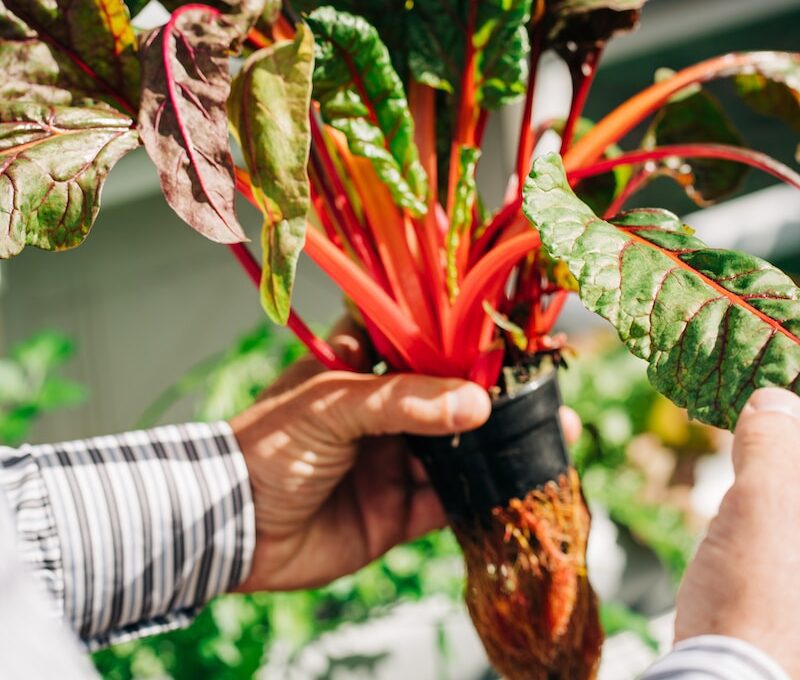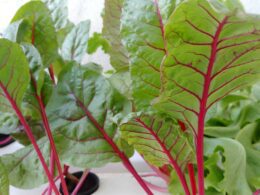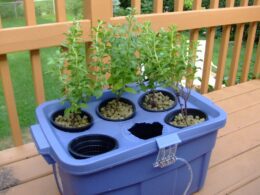Are you curious about how many broccoli you can expect to harvest from each plant? The answer to this question depends on several factors, including the variety of broccoli you choose to grow, the quality of your soil and the care you provide your plants. By understanding these factors and taking the necessary steps to ensure your plants are healthy and productive, you can maximize your broccoli yield and enjoy a bountiful harvest.
Growing your own vegetables can be a rewarding and satisfying experience, but it can also be overwhelming if you’re unsure about where to start. Fortunately, broccoli is a relatively easy crop to grow, and with a little bit of know-how, you can produce a generous supply of this nutritious vegetable.
In this article, we’ll explore the factors that affect broccoli yield, provide tips on choosing the right variety, and guide you through the process of preparing your soil, planting, and caring for your broccoli plants. Whether you’re a seasoned gardener or a beginner, you’ll find valuable information and practical advice to help you grow healthy, abundant broccoli plants.
Understanding the Factors That Affect Broccoli Yield
Discovering what factors impact the yield of these green vegetables will help you cultivate a bountiful harvest.
One of the most important factors is weather conditions. Broccoli plants thrive in cool weather, but too much heat or too little water can cause them to wilt and produce poor quality heads. It’s important to monitor the weather forecast and adjust your watering schedule accordingly.
Another factor to consider is pest control. Broccoli plants are susceptible to a variety of pests, including aphids, cabbage worms, and flea beetles. These pests can quickly decimate a crop if left unchecked. To prevent infestations, it’s important to inspect your plants regularly and use organic pest control methods, such as companion planting and natural predators.
By taking these factors into account, you can maximize your broccoli yield and enjoy a plentiful harvest. Remember to keep an eye on the weather and stay vigilant against pests, and you’ll be rewarded with healthy, delicious broccoli. Happy gardening!
Choosing the Right Broccoli Variety
Choosing the right variety of broccoli is crucial for a successful harvest that’ll leave you feeling proud and fulfilled.
Not all broccoli varieties are created equal. Some are better suited for cooler climates, while others thrive in hotter regions. When choosing a variety, consider factors such as the length of the growing season, the amount of sunlight your garden receives, and the soil quality.
Broccoli nutrition is a key consideration when selecting a variety. Some varieties have higher nutrient content than others, and this can affect the taste and texture of your broccoli. Look for varieties that are rich in vitamins and minerals, such as vitamin C, calcium, and iron. These nutrients are essential for good health, and they can also enhance the flavor of your broccoli.
Once you’ve selected the right variety, it’s time to start planning your broccoli recipes. Broccoli is a versatile vegetable that can be enjoyed in a variety of dishes, from soups and stews to stir-fries and salads. Experiment with different cooking methods and seasonings to find the recipes that best suit your tastes.
With the right variety and recipes, you can enjoy the delicious taste and health benefits of fresh broccoli all year round.
Could the Health of My Hydroponic Plants Be Affecting Their Yield?
Could the health of my hydroponic plants be affecting their yield? Ensuring optimum plant health is crucial for maximizing yield in a hydroponic system. Neglecting factors such as nutrient imbalances, pH fluctuations, and inadequate light levels may lead to plants dying in hydroponic systems, ultimately diminishing overall production. Monitoring and maintaining plant health through proper care and environmental control is key to achieving desired yields.
Preparing the Soil and Planting Your Broccoli
Before you start planting, make sure to prepare the soil by loosening it up and adding compost or other organic matter to create a nutrient-rich bed for your broccoli to grow in.
Broccoli plants thrive in well-drained soil that’s slightly acidic, so make sure to test the soil pH before planting. If the pH’s too high, you can lower it by adding sulfur or other acidic materials.
When it comes to planting your broccoli, make sure to give each plant enough space to grow. They need at least 18 inches of space between each plant and should be planted at a depth of 1/2 inch to 1 inch. You can plant broccoli in rows or in raised beds, depending on your preference. If you’re planting in rows, make sure to space them 24-36 inches apart.
Once you’ve planted your broccoli, make sure to water them regularly and keep the soil moist. Broccoli plants also benefit from regular fertilization, so make sure to add a balanced fertilizer every 2-3 weeks.
With proper soil preparation and planting techniques, you can expect each broccoli plant to produce several heads of broccoli throughout the growing season.
Caring for Your Broccoli Plants
To ensure your broccoli plants thrive, make sure to water them regularly, fertilize every 2-3 weeks, and keep the soil moist.
Watering frequency is important as broccoli plants need consistent moisture to grow successfully. Make sure to water your broccoli plants deeply, allowing the soil to absorb the water and reach the plant’s roots. You can check the soil’s moisture level by sticking your finger into the soil; if it feels dry, then it’s time to water.
Pest control is also a significant factor in caring for your broccoli plants. Keep an eye out for any pests that may harm your plants, such as aphids, cabbage worms, or flea beetles. You can use organic pest control methods, such as handpicking the pests off your plants or using natural spray solutions like neem oil, to avoid harming your plants or the environment.
It’s essential to monitor your plants regularly to catch any pest infestations early and take action immediately.
In addition to watering and pest control, you can also boost your broccoli plant’s growth by fertilizing every 2-3 weeks. Use a balanced fertilizer with a 10-10-10 NPK ratio to give your plants the necessary nutrients for healthy growth. Apply the fertilizer around the base of the plant and water it in thoroughly.
With proper care, your broccoli plants will produce an abundant harvest, and you’ll be able to enjoy fresh, delicious broccoli throughout the growing season.
Harvesting Your Broccoli
It’s that exciting time when you can finally start picking your delicious, homegrown broccoli! Harvesting your broccoli is a crucial step in the process, as it determines the quality and quantity of your yield.
You’ll want to start harvesting your broccoli when the head is fully formed, but before it starts to flower. To harvest your broccoli, use a sharp knife to cut the stem about 5 inches below the head. Be sure to leave some leaves on the plant to allow for future growth.
After harvesting, you can store your broccoli in the refrigerator for up to a week. To keep it fresh, wrap it in a damp paper towel and place it in a plastic bag.
Cooking with fresh broccoli is a great way to enjoy the fruits of your labor. Broccoli can be steamed, roasted, or sautéed, and pairs well with a variety of flavors and seasonings. Try tossing it with garlic and olive oil, or roasting it with Parmesan cheese.
Broccoli is also a versatile ingredient in many dishes, from stir-fries to pastas. Enjoy your harvest in a variety of ways and savor the taste of your hard work!
Frequently Asked Questions
Can broccoli be grown in containers?
You may have heard that broccoli can only be grown in large gardens or farms, but that’s not entirely true. You can grow broccoli in containers as long as you have the right size and type of container, and the right soil requirements.
Choose a container that’s at least 12-16 inches deep and wide enough to accommodate the mature size of the plant. Broccoli prefers well-draining soil that’s rich in organic matter, so mix in some compost or aged manure before planting.
With the right container size and soil conditions, you can grow fresh and healthy broccoli right on your patio or balcony.
How often should broccoli be watered?
To keep your broccoli plants healthy and thriving, it’s important to water them regularly. The frequency of watering depends on the soil moisture, so be sure to keep an eye on the moisture level.
Generally, broccoli plants need to be watered about once or twice a week, but this can vary depending on the weather and other conditions. You want to make sure the soil is moist, but not waterlogged, as this can lead to root rot and other issues.
By keeping a consistent watering schedule and monitoring the soil moisture, you can help your broccoli plants grow strong and produce a bountiful harvest.
Can broccoli be grown in hot climates?
Looking to grow broccoli in hot climates? While it may be a bit of a challenge, there are some tips that can help you maximize your yields.
First, make sure to choose a variety that is heat-tolerant and can withstand high temperatures. Additionally, planting in areas that receive partial shade can help keep the plants cool.
Consistent watering is also crucial, as broccoli tends to dry out quickly in hot weather. Finally, keep an eye out for pests and diseases, which can easily spread in warm, humid environments.
By following these tips and taking extra precautions, you can successfully grow broccoli in even the hottest regions.
How do you prevent pests from damaging broccoli plants?
To protect your broccoli plants from pests, consider companion planting with herbs like basil or dill, which can repel insects. Organic pesticides like neem oil or insecticidal soap can also be effective in controlling pests without harming beneficial insects or the environment. By combining these methods, you can ensure a healthy and thriving broccoli crop. So, you can rest easy knowing your plants are protected from pesky pests.
Can broccoli be grown in the shade?
Did you know that broccoli can actually be grown in the shade? In fact, there are many benefits of shade-grown broccoli.
For one, it can help prevent the plants from becoming stressed in hot weather. Additionally, shade-loving companion plants can help deter pests and promote plant growth.
Some great options for companion plants include lettuce, spinach, and kale. So if you’re looking to grow broccoli but don’t have a lot of space in direct sunlight, consider trying it in a shadier area with some helpful companions.
Conclusion
So, how many broccoli do you get from each plant? The answer depends on several factors, including the variety of broccoli you choose, the amount of sunlight and water your plants receive, and the quality of your soil.
By understanding these factors and taking steps to care for your plants, you can maximize your broccoli yield. To start, choose a broccoli variety that’s well-suited to your growing conditions and climate. Prepare your soil by adding compost or other organic matter, and plant your broccoli in a location that receives at least six hours of sunlight per day.
Water your plants regularly, and be sure to provide adequate nutrients through fertilization. As your plants mature, monitor them for pests and diseases, and take appropriate action to prevent or treat any problems.
Harvest your broccoli before the heads become too large and start to flower, and enjoy the delicious and nutritious bounty of your hard work. With proper care and attention, you can get a bountiful harvest of broccoli from each plant.








